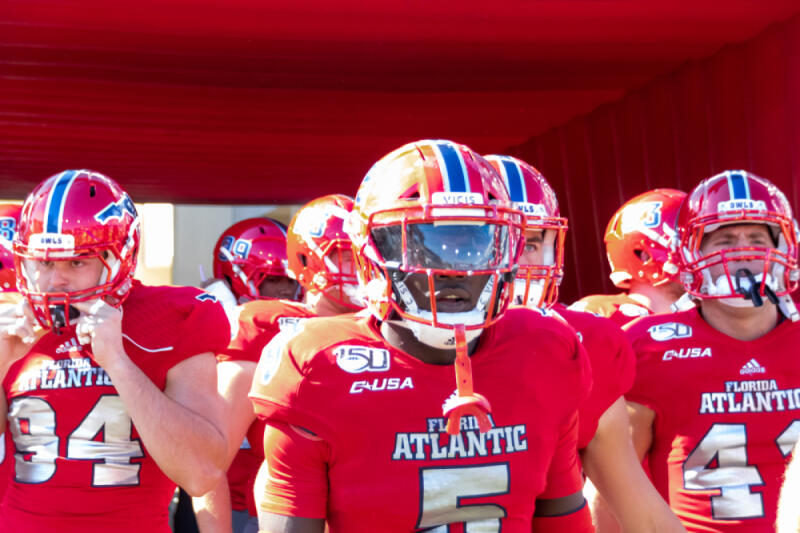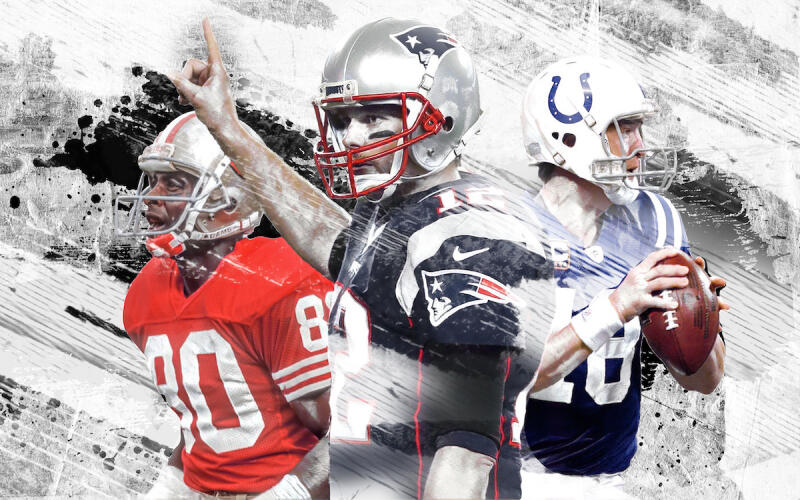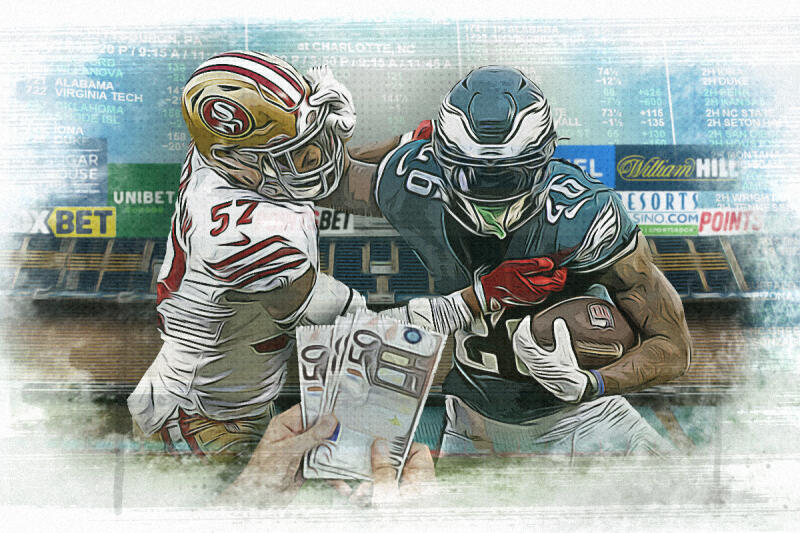How Many Rounds Are in the NFL Draft?
New hope is born in the spring. While some may associate that season with the start of Major League Baseball, many others start getting revved up for the upcoming football season for one reason – it’s time for the NFL Draft.
The NFL Draft consists of 7 rounds, where teams select new and young players capable of playing winning football.
Actually, when the 2022 regular season came to an end, the non-playoff teams all took a deep breath and then started looking at the season ahead. Decisions are made by those in the front office, the coaching staff, and the players.
Teams will decide to make changes or stand pat, and adding personnel begins with free agency. Players who are eligible and have fulfilled the terms of their previous contract can seek out or are recruited by potential employers.
Adding solid free agents can help a team gain strength, but the most important method for building an effective team is to be successful in the NFL Draft. This process takes place in April, and teams have 7 rounds to add new and young players that are capable of playing winning football.
Nothing is guaranteed. Great college football players may turn into the game’s next generation of superstars, but they also may become ordinary players or busts. Teams spend millions of dollars to research each draft class and make the best decisions.
All teams suffer failures, but the teams that are consistently successful have a chance to make the playoffs most years and contend for the Super Bowl. Other teams struggle to find winning players on a consistent basis and rarely make the playoffs.
In this piece, we will explain the rules, regulations and nuances of the NFL Draft.
Related: Brush up on this season's games with our insightful NFL Predictions.
The Rules and the Process of the NFL Draft

The NFL Draft started in 1936 and has gone through a multitude of iterations. It started off as a private event that included management representatives from each team who often used preseason college football magazines as a main source of information to base selections.
Scouting and player evaluation became a science as the years went by, and the draft started to become popular with the fans in the 1950s and ‘60s. However, the draft would not become the major media event it is today until the 1980s, when draft experts like the late Joel Buchsbaum of Pro Football Weekly and ESPN’s Mel Kiper Jr. wrote guides with incredible details outlining the strengths and weaknesses of draft-eligible players.
Once ESPN started televising the draft, the event grew in exponentially. The current version of the draft consists of 7 rounds with each team getting one pick per round. Additionally, compensatory picks are added when teams lose free agents.
Draft Methdology
Teams are assigned to a particular draft “slot” based on their performance during the previous season.
Teams that didn’t make the playoffs get the first 18 selections, and the team with the worst record gets the first pick. These teams are assigned to slots 1 through 18, based on their regular season records. Teams that with worse records will get earlier slots, while teams with better records will get later slots.
Slots 19 through 32 go to teams that made the playoffs. The six losers in the wild card round are assigned to slots 19 through 24, based on their regular season records. Slots 25 through 28 go to the losers in the divisional playoffs, also based on regular season records. Slots 29 and 30 go to the losers in the conference championships. The Super Bowl loser gets the 31st slot, and the last slot goes to the Super Bowl champion.
In the event that two teams finish with the same record, the NFL uses a series of tiebreakers to determine their Draft ranking. Most of the time, the first tiebreaker – strength of schedule – is sufficient. The league calculates the total winning percentage of all the teams’ opponents and compares them. The team with the stronger schedule receives the earlier pick.
If two teams have the same strength of schedule, the NFL compares the strength of their division. If that’s not enough, strength of conference is used. If somehow two teams are still the same, the league falls back on the following methods:
- Head-to-head record
- Best record in common games (minimum of four)
- Strength of victory for the entire season
- Best combined points scored and points allowed for the season
- Most points scored for the season
- Most touchdowns for the season
- Coin toss
The NFL only added these later tiebreakers in 2019. Prior to then, if two teams finished with the same record and the same strength of schedule, it went to a coin toss.
Drafting process
The NFL went to a 7-round draft in 1997, with the reverse order of the standings outlined above used as the standard for each round. It remains a seven-round draft in 2023 and has been a three-day process since 2010. The first round is the story on the initial night, followed by the second and third rounds on the second day with rounds four through seven on the third day.
The draft is televised by multiple television networks, but it first was broadcast in 1980 by ESPN. At that time, ESPN president Chet Simmons asked NFL commissioner Pete Rozelle for the right to televise the selection process.
Rozelle initially thought the idea was silly and that nobody would watch teams go up to a podium and make an announcement of a player’s name, but he approved the idea and it proved to be a huge hit.
How Long Does Each Team Have to Pick?
In order to speed things up, the NFL sets time limits for each pick. During the first round, teams have 10 minutes to make their decision. During the second round, they have 7 minutes, 5 minutes in the third through sixth rounds, and four minutes in the seventh round.
Teams are allowed to take longer than that to make a pick. But once their time runs out, the following team is “on the clock.” That team may end up sniping a prized player, so teams rarely exceed their clock time.
Compensatory Picks
In addition to the 32 selections in each of the seven rounds, compensatory picks are awarded to teams based on the players they lost and gained in free agency. Teams that have lost more compensatory free agents than they signed in the previous year receive additional picks in rounds 3 through 7. Teams that gain and lose an equal number of players but lose higher-valued players are awarded a pick at the end of the 7th round.
Compensatory free agent picks are awarded just before the official beginning of the new league year. Free agent gains and losses after the beginning of the league year will count towards the following year’s draft. The deadline for the 2023 NFL Draft was May 2nd, 2022. Any gains or losses after May 2nd will be applied to the 2024 NFL Draft.
Trades
Draft positions are considered assets. Once a team receives its slots, it can trade those selection spots. Teams will often use Draft slots to sweeten the deal when negotiating player trades. They can even trade Draft slots from future years.
This is a gamble for both teams since neither team knows how good that future pick will be. A team might trade for a 2024 second round pick without knowing whether it will be early or late in the round.
Teams can also swap picks on Draft Day. They frequently do this on the fly. For example, a team might want a specific wide receiver with the 16th pick in the first round. If that player gets picked by the team with the 14th slot, the team might be willing to trade down and pick up additional draft picks.
Every trade is unique and happens for its own reasons. In order for a trade to be approved, both teams must notify the league, and both teams must relay the same information. At that point, the league will make their approval, and notify all 32 teams. They also make an in-person announcement at the Draft venue and inform the media.
Player Eligibility
In order to be eligible for the NFL Draft, a player must have finished high school at least three years earlier. Players that have completed their junior year or are red-shirt sophomores are eligible for the draft
College underclassmen can join the draft process by obtaining a special waiver. This may be the case for players with special hardship cases.
Undrafted players can also be signed to contracts. NFL history shows that the draft is a hit or miss affair, and players that go undrafted can be effective NFL players. Kurt Warner, Rod Smith, Warren Moon, Willie Brown, John Randle and Tony Romo are just a few of the undrafted players who have gone on to brilliant careers in the NFL.
Key Takeaways
- The draft process is not guaranteed to always produce superstar players, despite teams spending millions of dollars to research each draft class. However, teams that are consistently successful in their draft choices have a chance to make the playoffs most years and contend for the Super Bowl.
- The NFL Draft began in 1936 and has evolved over the years. It became popular with fans in the 1950s and 1960s and grew exponentially once ESPN started televising it. It didn't become the major media event it is today until the 1980s.
- Teams are assigned to a specific draft slot based on their performance during the previous season. Teams that didn't make the playoffs get the first 18 selections, and the team with the worst record gets the first pick. Playoff teams are assigned slots 19 through 32. In the event of a tie in the records, a series of tiebreakers are used, such as the strength of the schedule, the strength of their division, the strength of the conference, and others.
- The NFL set time limits for each pick to speed up the process. Teams have 10 minutes to make their decision during the first round, 7 minutes in the second round, 5 minutes in the third through sixth rounds, and 4 minutes in the seventh round.
- In addition to the standard 32 selections in each of the seven rounds, compensatory picks are awarded to teams based on the players they lost and gained in free agency. These picks are added in rounds 3 through 7.
- Draft positions are considered assets and can be traded. Teams can use draft slots to negotiate player trades or swap picks on Draft Day. Trades can also involve draft slots from future years.
- To be eligible for the NFL Draft, a player must have finished high school at least three years earlier. College underclassmen can join the draft process by obtaining a special waiver. Undrafted players can also be signed to contracts.
FAQs
How many picks are in the NFL Draft?
There are a minimum of 256 picks in the NFL Draft. However, there can be more depending on how many compensatory picks are awarded.
Is there trading in the NFL Draft?
Yes. Teams frequently include draft picks in player trades.
When does the NFL Draft take place?
The NFL Draft takes place at the end of April. It begins on a Thursday, and ends on the last Saturday of the month.
When is the first round of the 2022 NFL Draft?
The 2022 NFL Draft has already happened. It was held on April 28th, 2022. The first round of the 2023 NFL draft will be on April 27th, 2023.
How many days is the 2022 NFL Draft?
The 2022 NFL draft lasted for three days, and took place at the Caesars Forum on the Las Vegas Strip. The 2023 NFL Draft will also last for three days, and will be held in Kansas City.
What time does the Draft start?
The NFL Draft starts at 8 PM, Eastern time.
Our editorial content strives to be highly informative and educational to our audience, especially for visitors who are new or relatively new to analyzing and predicting sporting event results. All of our content is created by informed writers with backgrounds in their subject area and reviewed for omissions or mistakes.
Our editorial team is run by individuals with many years of experience in digital publishing, editorial, and content production. Our editorial content is always marked clearly in any instances where it may be sponsored by a third party, though it is still reviewed by our staff to ensure it remains consistent with our company mission.
- Popular
- Latest






